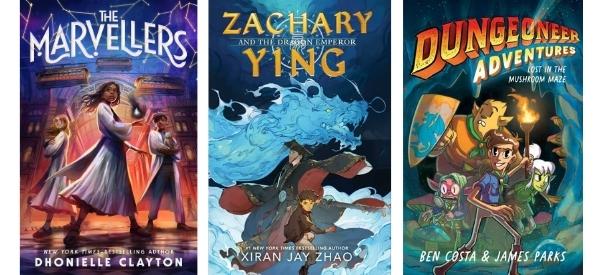Is Screen Time Killing Our Kids’ Brain Cells? (It Depends)
This post may contain affiliate links.
A new survey of parents released this month by PBS KIDS says more than half of kids will find a tech gift under the tree.
Wow!
And, most of these gifts will be tablets. (Edging out video game consoles.)
Which made me think . . ., if all of us are buying technology for kids, is this a good or a bad thing for kids? And how do we know?
I had the opportunity to talk with Lesli Rotenberg, General Manager, Children’s Programming, PBS, about some of my burning questions. (Like are we killing our kids brain cells???)

Interview with Lesli Rotenberg of PBSKids
Melissa: Okay, here’s my biggest question. Are we killing our kids brain cells with all their time on iPads and computers?
Lesli: The answer is . . . that depends. It’s how you’re using that technology, not the technology itself that’s going to destroy their brain cells. It’s really about the content. . . If you’re choosing content that is truly educational, your kids can learn a great deal from technology . . . On the other hand, there’s a lot of crap out (pardon my expression.) Really, there that is a big waste of time for kids, and they’re not developing any skills and you really want to avoid that.
Melissa: How do parents tell the difference between a good, educational app and one that is “crap”?
Lesli: It’s really important that parents do some homework. They’re going to homework before you buy a device . . . it’s just as much, if not more important, do do your homework before you buy an app. They may not cost very much but the value really depend on how much has gone into it. Look for companies that you really trust. Can they prove apps teach kids? Are they based on research? Are they based on a curriculum?
I can tell you that at PBS, our development is very rigorous. We work with a team of educational advisors, we build a curriculum roadmap, we have skills that we expect each app to teach kids. Then we go into a round of testing, including testing with kids, it’s a really important process.
Melissa: What is a good balance for technology and kids?
Lesli: It mostly depends on your kids. We try to stop short of saying only spend this amount of time on line. Parents really know their kids. Some kids have a personality where they need to set more severe limits than with others
I have two kids – one can put down the technology and run around and play and the other one I had to impose more limits on. There are good tips on PBSParents.org.
The one really important thing is that you set a media plan that you have sort of a balance diet that includes time with screens and that includes a lot of time outside and playing with kids of their own age, and even with adults.
Melissa: Maybe we adults need a media plan!
Lesli: Well, that’s a really good point. Because we are the role models and if we’re constantly attached to a device, what do you think they are going to do? And also, can they get engaged in the child’s game play? Because it’s a great way to bond, but it’s also an opportunity to point out things that will help their kids to learn more. So kids will learn more if their parents are involved and using those moment as teaching moments.
Melissa: I hadn’t thought of that. So I have to learn Minecraft?
Lesli: Well, it might not be a bad idea. At least to understand it. Because then you’re in a position to help kids make the transition from screen world to real world. Then you can point out how those skills might be transferrable from the technology world to the real world.
Melissa: Are there any short term or long term effects of bad (crappy) apps?
Lesli: I wish that we had research on long term effects but we don’t. But if they’re built well, if they’re curriculum based, if there age appropriate, they can teach. And we have some really good research showing how apps can teach. We have
30% increase in vocabulary words for example with one of our apps called Martha Speaks.
Melissa: Are you seeing a “digital divide”?
Lesli: Yes, there really is a digital divide – you do see a big difference between the access to technology with kids in low in come communities and upper income communities. I guess the one glimmer of hope is that smart phones seem to be bridging the gap. What we found is that 75% of kids have access to a smart phone – that’s pretty high. It was only 50% a year ago. At that rate, it means most kids will have access to smart phone which means they do have access to the internet that may be the only way they’re getting the internet.
We were trying to develop a tool for low income parents and we came up with a free app, PBS Parents Play & Learn. The parent content is in Spanish and English. It’s for parents to teach parents how anytime can be learning time . . .
Melissa: I can’t wait to check it out, thanks. And thank you for your time today, I really appreciate it. Take care.
Lesli: You, too. Bye-bye!
Tips for Parents Choosing Apps from PBSKids
PBS KIDS, the number-one and most trusted kids’ educational media brand and the source of educational media used most often by preschool teachers, offers these five tips to help parents navigate successful selection and use of apps:
1. Think about what your child is passionate about: Look for content that builds on your child’s excitement. Media should engage kids and spark their curiosity about the world around them.
2. Distinguish what is truly educational: Consider whether the content of the app is curriculum and research-based. Mobile platforms can amplify learning gains for children.
3. Develop a media plan for your family: A balanced media diet includes setting limits. This is also something that parents can keep in mind, too, as kids often model their parents’ behavior.
4. Play together: For kids 2 and up, apps are another opportunity to explore with your child. Talking with kids about the game or activity as you play offers both the opportunity to bond as a family and also identify teachable moments.
5. Avoid apps that try to sell: Select apps from trusted, reliable sources, and make sure that they are not trying to market to your child.
Find all the PBSKids apps here!
KEEP READING







Love this interview. Balance and focus are key. ThinkStretch, a summer learning program designed to combat summer learning loss, has some great sites on their blog. Here’s the post if anyone is interested in educational sites that kids enjoy: http://thinkstretch.com/blog/just-dont-tell-them-its-educational/
[FULL DISCLOSURE: I don’t work for ThinkStretch, but I do help with their digital.]
thanks for sharing!
I am seeing more and more toddlers on my caseload as a pediatric speech pathologist that have more screen time than face to face time with mom/dad. Kids need language models, not just visual and auditory input. They were designed with a need for face to face interaction in order to learn language. I say put down the tablet, both of you, and talk, sing and laugh with your baby.
thanks – 1:1 is best, no argument there!
Technology can be a place for parents and children to connect and build relationships, just like reading books or eating dinner together. My social enterprise company, Unite for Literacy, is committed to providing free, developmentally and culturally appropriate content for all emergent readers, and in particular emergent readers who speak a language other than English in the home. As the digital divide shrinks from a technology standpoint, with smartphones and tablets saturating the world, a divide will still exist due to the fact that most apps are in English (or at most, in English and Spanish). What if your family speaks Tagalog? Our library, at http://www.uniteforliteracy.com, currently contains 100+ books narrated in 15 languages, and our goal is hundreds of books in hundreds of languages. http://www.uniteforliteracy.com
thanks for sharing.
I’m loving this interview. As long as you pay attention to the kids during the day ( like being present with them) an hour or half hour of tecnology won’t hurt. Is all about the bonding time they have with you or your nanny or the grandparents . For my own experience, kids are better listeners when you are truly present with them, like when I say “just 30 min of TV” they will turn them off themselves after those 30 min , if that specific day I was 100% present with them and the days that my attention is half with them is harder to make them listen.
http://www.aznannies.com
so true!
I believe is the same as for TV. Parents must verify content and time spent on it. I liked the idea of parents learning their games to help them make the transition to real life. I have set a timer for my kids that block the iPad, but now they figure it out how to put pause! So I verify also with my watch.
🙂 Smart kids!